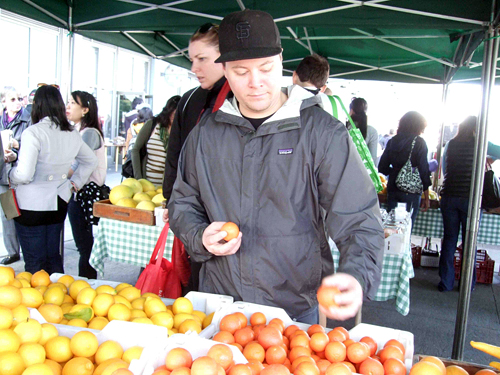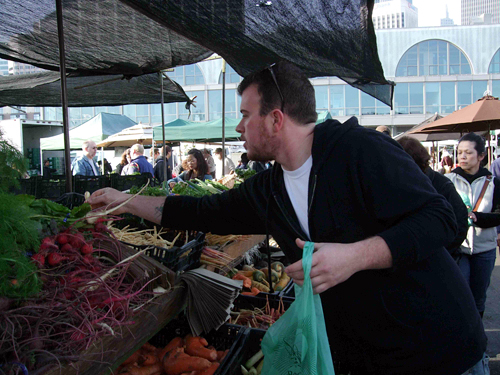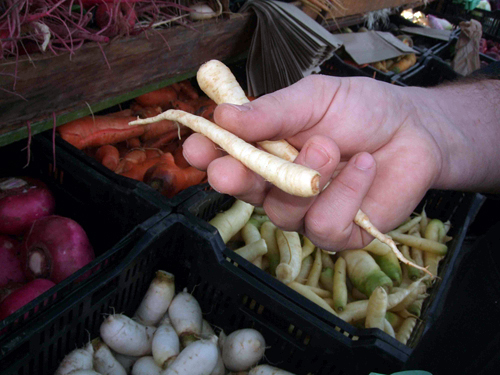Trevor Ogden, executive chef at Mission Beach Café, is currently accompanying his braised Prather Ranch lamb shank with a puree of baby parsnips, which he picks up from Heirloom Organic Gardens. When shopping for the root vegetable for home cooking, however, Ogden says size doesn’t really matter all that much.
“You can use both,” he advises. “Bigger can be better, but the little ones you don’t have to peel.” Look for clean, firm roots.
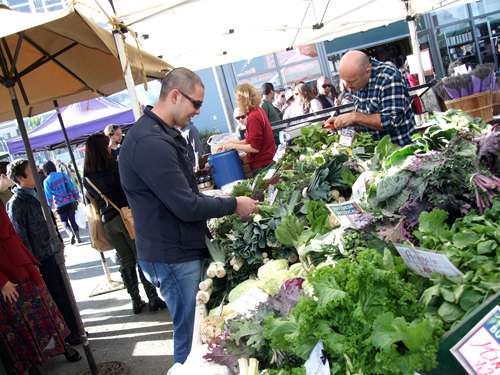
Aziza's Louis Maldonado looks at Romanesco broccoli.
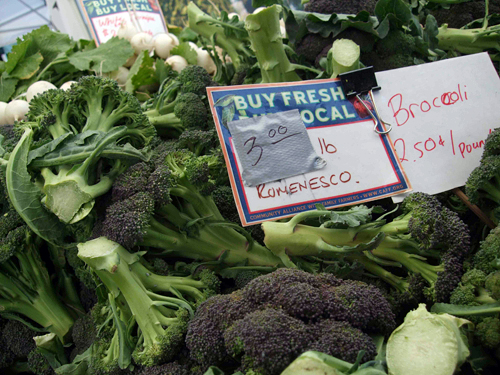
Louis Maldonado, chef de cuisine at Aziza, enjoys working with Romanesco broccoli, which he prizes for its trimmings even more than the crowns. Sometimes he’ll even purchase them separately, often from Dirty Girl Produce. The trimmings work well for him because he doesn’t have to blanch or otherwise prepare some big hunk of broccoli. We’ve always stumbled around and picked huge, fat crowns, but it turns out that’s not a great strategy. Maldonado instead looks for really small crowns and roasts them whole with anchovies, lemon, parsley, and olive oil.
“When they get bigger, it kind of takes the special [qualities] away, so we just try to go for smaller ones,” he says. “The stuff they don’t make money on, we try to buy.”
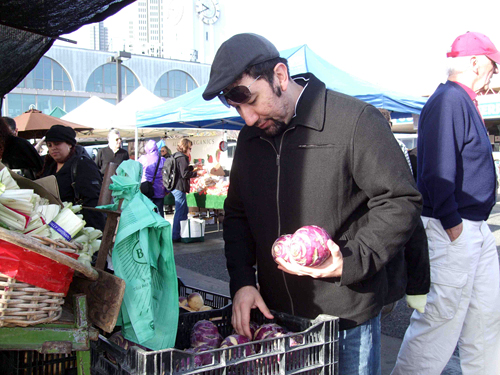
Credo’s Gustavo Romero ponders the best purple kohlrabi.
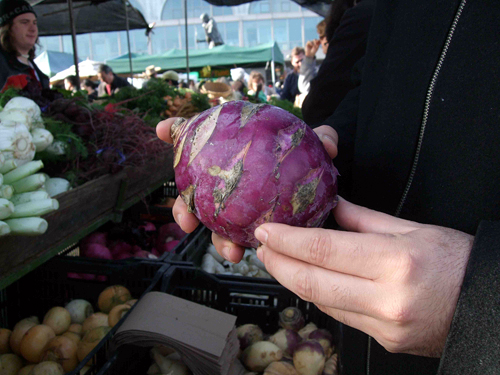
Purple kohlrabi is big and scary looking, not the sort of vegetable that timid chefs would take a chance on, but Gustavo Romero, executive chef at Credo, makes it sound versatile and easy to use. Heirloom Organic Gardens is sporting big, beautiful specimens of this traditionally Lebanese, cabbage-like veggie right now.
“All the stuff they bring here is good quality,” notes Romero as we walk back towards the stand and spot the purple beasts. He picks up a few that are bigger, with cleaner white spots. “For the restaurant, I like to use the larger ones to mash them, because it’s easier and you spend less time doing it. In root vegetables, I don’t think the size especially matters unless you’re talking about carrots, because baby carrots have a lot more flavor.” Credo currently cooks a fish in parchment paper with root vegetables, including kohlrabi. He also loves to boil them and use them in a puree for a great consistency.
“Kohlrabi is great steamed in a stew with potatoes, carrots, and a chicken; it’s also great as a crudité or shredded like a cole slaw, skin and all,” adds Heirloom Organic farmer Dave Jamrock.
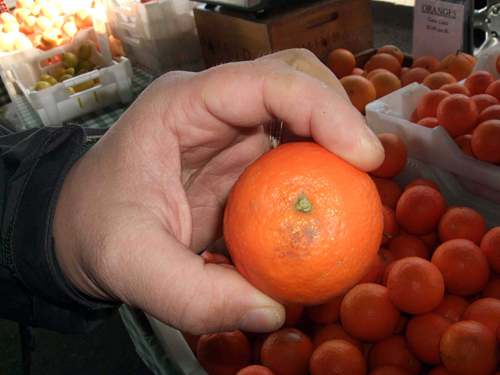
Page mandarin orange
Like many of his colleagues, Evan Rich, chef de cuisine at Coi, heads to the Hamada Farms stand for citrus. Right now, the Page mandarin oranges at Hamada are really good. He uses the juice for a play on a mandarin sour cocktail: Frozen mandarin ice with mandarin vodka jelly and a frozen meringue flavored with Angostura bitters.
He looks for a fruit that weighs a little bit, and says the color of the skin is important: If it’s more vibrant and darkly hued, the juice will probably be sweeter and more concentrated. He also suggests holding one in each hand; the heavier one will produce more juice.
Hamada is a reliable source, but Rich will often go the extra step to research the weather conditions around the various farms to figure out which ones might be producing the fruit with the most and most flavorful juice at the moment and then do a taste test at the stands.
“At Coi, that’s the kind of intensity we have with the ingredients,” he says. “It’s very important about taste and freshness. With fresh ingredients, there’s like an energy — it’s hard to explain, but it’s like there’s something that you can’t even notice, but it’s a subconscious thing that you just realize it’s better. And that’s why I come here.”
Previously: Bay Area Chefs on Winter Produce
